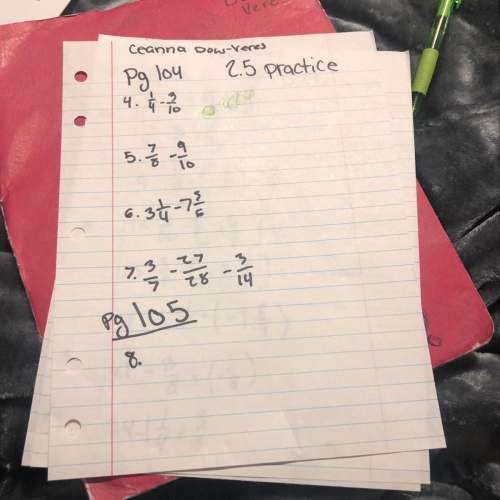
Mathematics, 23.10.2020 21:40 DESI111609
The graph shown below expresses a radical function that can be written in the form f(x)=a(x+k)^1/n+c. What does the graph tell you about the domain and range of this function?
A.) The domain is [c, infinity), and the range is [-k, infinity).
B.) The domain is [-k, infinity), and the range is (-infinity, c]
C.) The domain is (-infinity, k], and the range is [c, infinity)
D.) The domain is (-infinity, infinity), and the range is (-infinity, infinity)


Answers: 3


Another question on Mathematics

Mathematics, 21.06.2019 19:30
Identify the number as a rational or irrational.explain. 127
Answers: 1


Mathematics, 22.06.2019 02:40
Scarlett stopped at a campground along the appalachian trail. the campground had a 12 acre area for tents, divided into 6 equal campsites. scarlett picked one of the sections to pitch her tent. which expression would give you the size of scarlett’s campsite? (more than one answer
Answers: 1

Mathematics, 22.06.2019 02:40
Exercise: counting committees 0.0/2.0 puntos (calificable) we start with a pool of n people. a chaired committee consists of k≥1 members, out of whom one member is designated as the chairperson. the expression k(nk) can be interpreted as the number of possible chaired committees with k members. this is because we have (nk) choices for the k members, and once the members are chosen, there are then k choices for the chairperson. thus, c=∑k=1nk(nk) is the total number of possible chaired committees of any size. find the value of c (as a function of n ) by thinking about a different way of forming a chaired committee: first choose the chairperson, then choose the other members of the committee. the answer is of the form c=(α+nβ)2γn+δ. what are the values of α , β , γ , and δ ?
Answers: 3
You know the right answer?
The graph shown below expresses a radical function that can be written in the form f(x)=a(x+k)^1/n+c...
Questions




Social Studies, 17.12.2021 04:30




Social Studies, 17.12.2021 04:30





Physics, 17.12.2021 04:30





Geography, 17.12.2021 04:30


History, 17.12.2021 04:30




